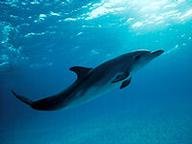Quiz Answer Key and Fun Facts
1. The species identification "rorqual" comes from the Norwegian word "rorhval" which means "furrow." These furrows are obvious on all rorqual whales. Which whale is NOT a rorqual whale?
2. Right and gray whales have been fished almost to extinction, although the pygmy right whale has never been exploited. Which of the following IS a right or gray whale?
3. Narwhals and belugas make up another family of whale. However, taxonomists sometimes include a dolphin which lives in the Indo-Pacific in this family. Which dolphin is sometimes included?
4. Which whale expels a reddish-brown intestinal fluid when it feels threatened, similar to the octopus's ink?
5. Males of this species have a modified tooth that can grow to 10 feet long! Which whale is it?
6. The largest family of whales are the beaked whales. Not much is known about this family; most data is collected off of dead animals. The most distinctive aspect of these whales is their teeth; most specimens have only two or four oversized teeth. Which whale's teeth erupt from bulges in the lower jaw?
7. The family Delphinidae describes which type of cetacean?
8. The family "Phocoenidae" describe which animals?
9. This dolphin occurs off the eastern coast of South America, and can be found 150 miles up the Amazon River. It is colored a light blue on top, with a pale white underside.
10. Sometimes called the hookfinned porpoise, this animal has a barely noticeable beak. They live in deep waters in the northern latitudes between North America and Asia, and are very fast swimmers (up to 20 mph).
11. These dolphins have small eyes, and can be effectively blind. They rely on echolocation to find prey and swim in turbid waters. They include the baiji and boto.
12. This family includes the vaquita, harbor, and spectacled. They are shy and usually stay away from boats. They are particularly susceptible to nets, fishing line, and other pollution.
13. This oceanic dolphin has a distinctive yellow patch on its sides. It is mostly found in the northern latitudes of the Atlantic.
14. This popular dolphin sometimes herds fish onto a beach in order to eat the stranded fish. Consequently, the teeth on one side of the mouth (usually the right) are more worn down because they chew the grit from the beach along with their catch.
15. And, speaking of orcas, which of the following does an orca NOT do with its food?
Source: Author
leviathan2000
This quiz was reviewed by FunTrivia editor
crisw before going online.
Any errors found in FunTrivia content are routinely corrected through our feedback system.

